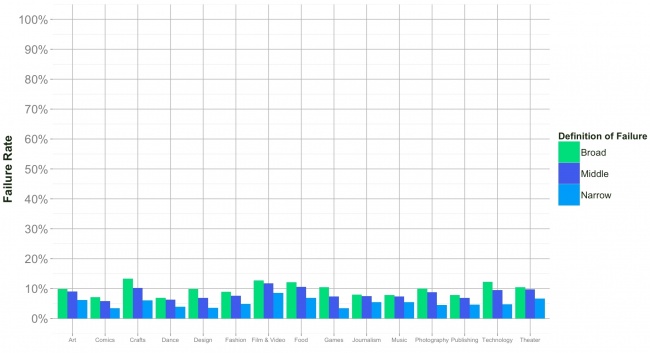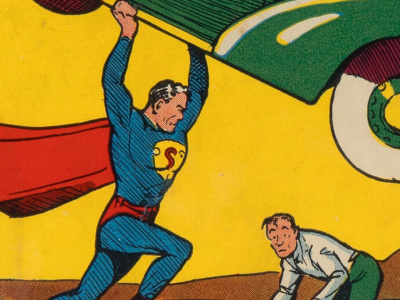In March 2015, Kickstarter invited Professor Ethan Mollick, a scholar from the Wharton School of the University of Pennsylvania who is an expert in entrepreneurship and innovation, to conduct a survey of nearly 500,000 backers about project outcomes and backer sentiment. Over 10% responded. Mollick’s main question was whether creators delivered rewards as promised – not just if the work was actually made.
Sample findings included:
- 9% of Kickstarter projects failed to deliver rewards
- 8% of dollars pledged went to failed projects
- 7% of backers failed to receive their chosen reward
- 65% of backers agreed or strongly agreed with the statement that “the reward was delivered on time”
- 17% of backers disagreed or strongly disagreed with the statement that “the reward was delivered on time”
- Failure rates are relatively consistent, within a range, across categories
- Projects that raise less than $1,000 fail the most often
“Project backers should expect a failure rate of around 1-in-10 projects, and to receive a refund 13% of the time,” Mollick wrote in his analysis. The 13% is of those that report failure, so 87% of projects that failed did not refund money to the backers.
“Since failure can happen to anyone, creators need to consider, and plan for, the ways in which they will work with backers in the event a project fails, keeping lines of communication open and explaining how the money was spent,” Mollick wrote. “Ultimately, there does not seem to be a systematic problem associated with failure (or fraud) on Kickstarter, and the vast majority of projects do seem to deliver.” Mollick also noted that these findings apply only to Kickstarter, not crowdfunding in general.
The study offered a detailed graph across all 15 types of project categories. The three Definition of Failure categories in the graph were defined as:- Broad means at least one backer considered the project a failure.
- Middle means at least half of backers agreed the project was a failure.
- Narrow means all backers agreed the project was a failure.
(Click any image for larger view.)
Comic projects had one of the lowest failure rates by all three measures, with only 3% of projects failing by the “all backer agreed” measure. Games projects (which include video and computer games as part of its definition) also listed a 3% failure rate by the “all backers agreed” measure. Games projects were closer to the average failure rates by the other two measures, while comics projects failed at a low rate by all measures.Mollick used the middle definition of failure for his 9% estimate of the rate at which all Kickstarter projects fail to deliver.
To view ICv2’s most recent Tabletop Game Kickstarter Chart see “Top 10 Tabletop Game Kickstarters.”











